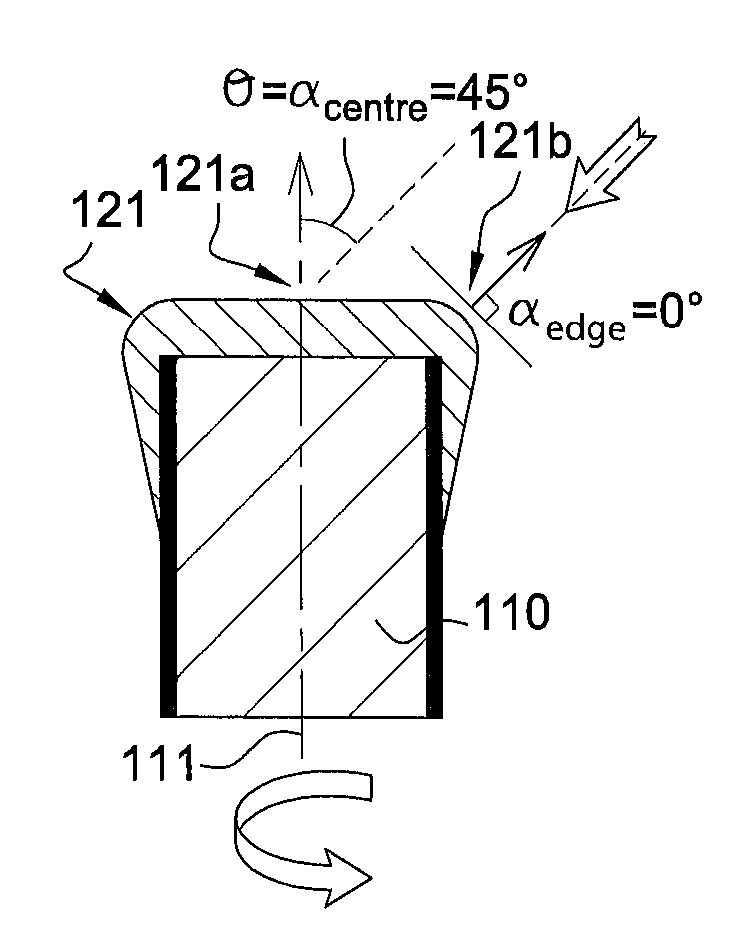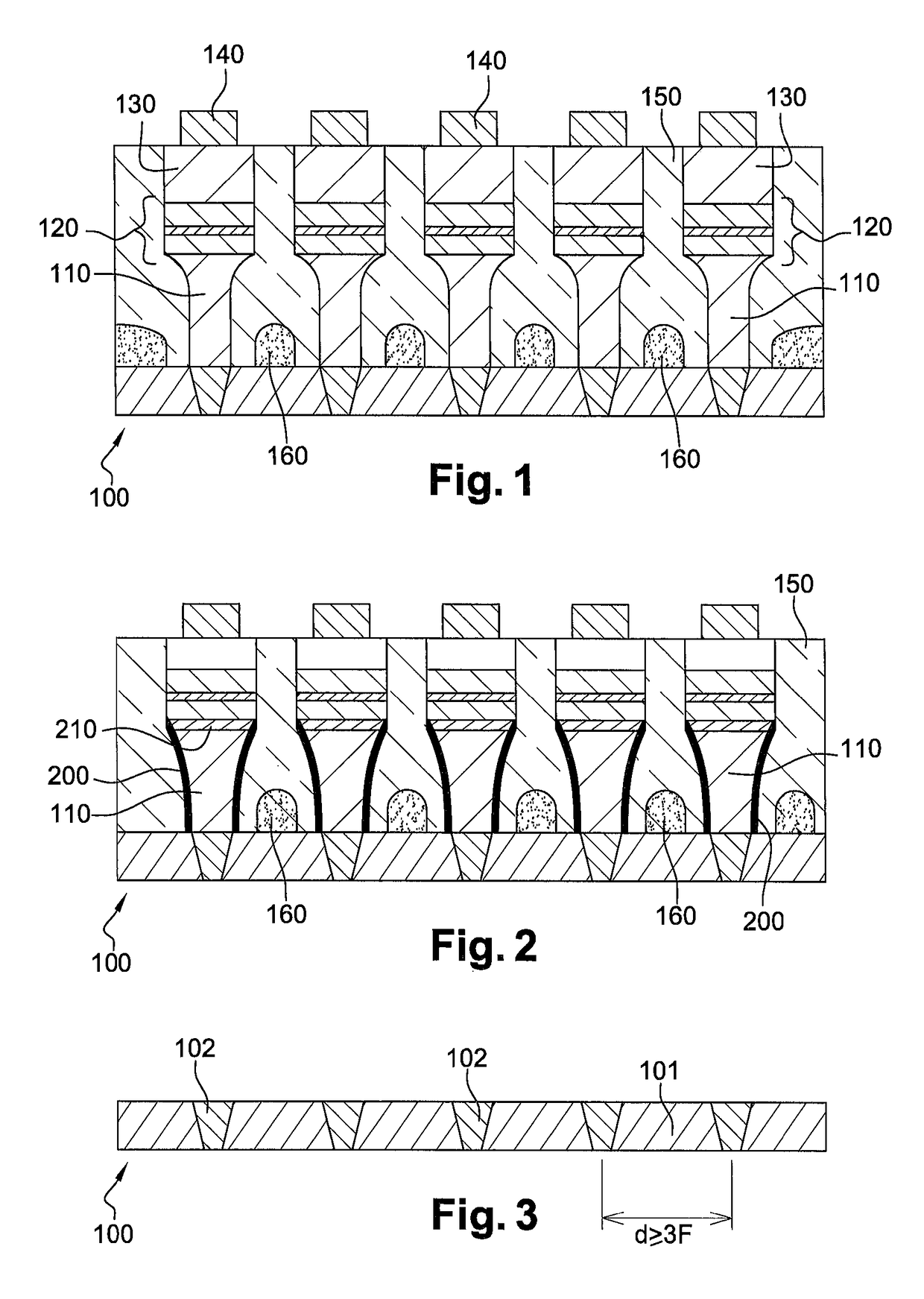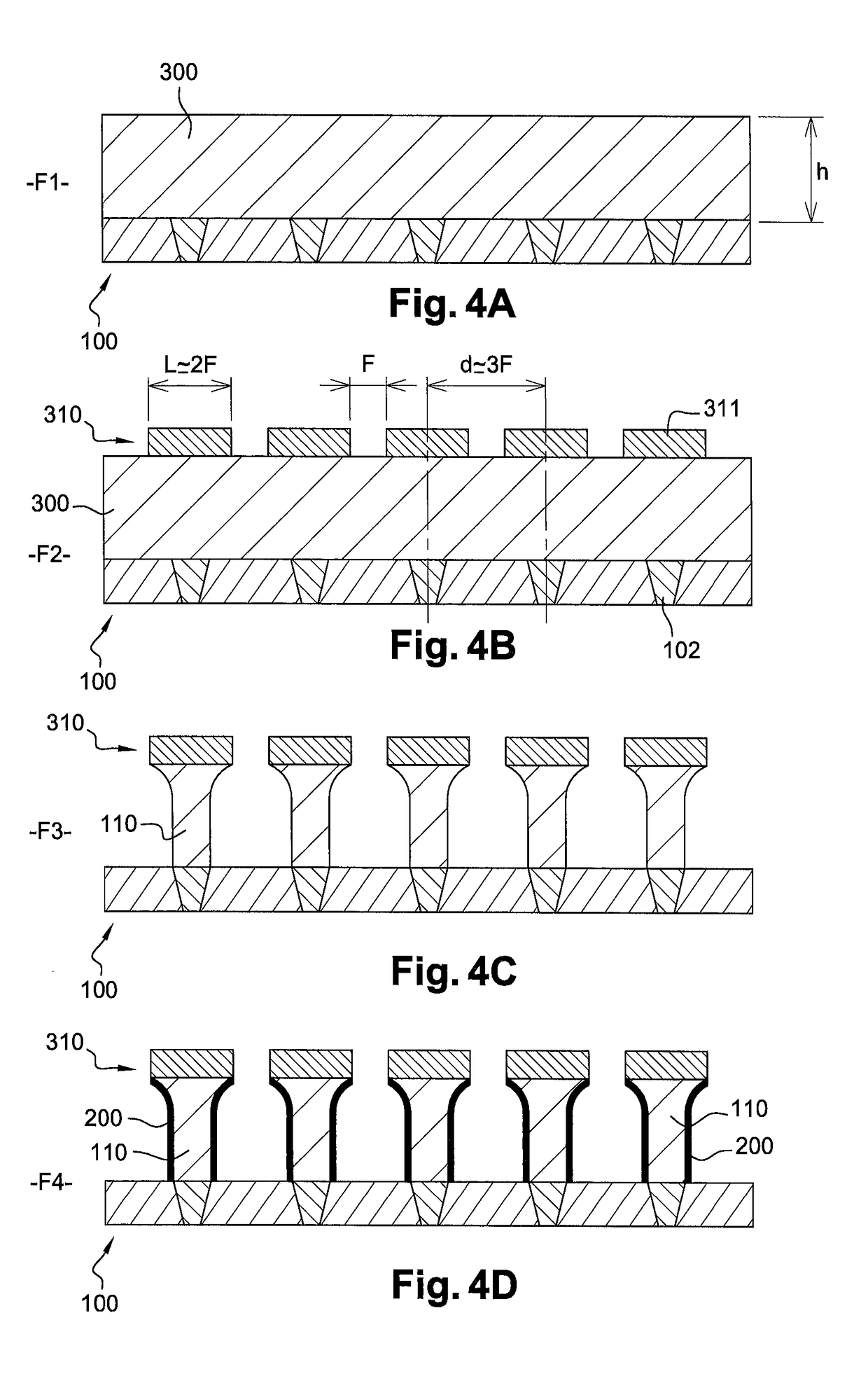Method for manufacturing a resistive device for a memory or logic circuit
a resistive device and logic circuit technology, applied in solid-state devices, vacuum evaporation coatings, coatings, etc., can solve the problems of reproducibility and defectiveness, gas used to generate reactive plasma may corrode the materials to be etched, and ibe (ion beam etching) to achieve the effect of reducing electrical variability
- Summary
- Abstract
- Description
- Claims
- Application Information
AI Technical Summary
Benefits of technology
Problems solved by technology
Method used
Image
Examples
first embodiment
[0056]FIG. 1 represents, in section view, a resistive device where the variable resistance storage elements are supported by flared conductive pillars.
[0057]The resistive device comprises a substrate 100 on which is arranged a set of pillars 110 made of electrically conductive material, for example tantalum. The pillars 110 are oriented vertically with respect to the plane of the substrate 100. Preferably, their section, measured in a plane parallel to the substrate 100, varies in a strictly increasing manner from the base to the top of the pillars. In other words, the section of the pillars 110 is minimum at their base and maximum at their top.
[0058]The device further comprises a plurality of storage elements 120 arranged at the tops of the pillars 110. In the case of memory type applications, these storage elements 120 have an electrical resistance varying between two states in response to an electric stimulus, a low resistance state and a high resistance state. They may thus form...
second embodiment
[0064]FIG. 2 represents a second embodiment, wherein the sides of the pillars 110 have an arc of circle or “bowing” shape and are covered with a layer 200 made of electrically insulating material. The section of the pillars varies in a continuous manner, for example increasing from the base to the top of the pillars, as is illustrated in FIG. 2. Otherwise, the section may decrease slightly from the base of the pillars then increase on approaching the top. In other words, the minimum section of the pillars is not necessarily that at the base of the pillars.
[0065]More generally, the pillars may be of varied shapes depending on the technology used. In particular, their section may be round, elliptical, square or rectangular.
[0066]The insulating layer 200 covers at least the portion of side situated at the base of the pillars 110, facing the residual deposits 160 of resistive material, and preferably the totality of the sides. It improves the electrical insulation between the different ...
third embodiment
[0118]It may be noted in the sectional view of FIG. 5 that, when they are produced according to the “damascene” method, the electrical contacts 140 and the conductive vias 102 of the substrate 100 also have a flared shape, with a section at the base smaller than at their top. By their very shape, the conductive vias of damascene type could thus serve as support to the variable resistance storage elements. Thus, in the resistive device, the flared conductive pillars are constituted of electrical interconnection vias of damascene type.
[0119]In FIG. 6, the pillars are advantageously formed by the upper part of conductive vias 102′ belonging to the final interconnection level of the substrate 100 (before the memory points). In other words, the conductive vias 102′ are extended outside of the dielectric layer 101 and serve as support to the deposition of the storage elements 120 and the covering elements 130, before being surrounded by the dielectric filling material 150.
[0120]Alternativ...
PUM
| Property | Measurement | Unit |
|---|---|---|
| polarisation voltage | aaaaa | aaaaa |
| polarisation voltage | aaaaa | aaaaa |
| diameter | aaaaa | aaaaa |
Abstract
Description
Claims
Application Information
 Login to View More
Login to View More - R&D
- Intellectual Property
- Life Sciences
- Materials
- Tech Scout
- Unparalleled Data Quality
- Higher Quality Content
- 60% Fewer Hallucinations
Browse by: Latest US Patents, China's latest patents, Technical Efficacy Thesaurus, Application Domain, Technology Topic, Popular Technical Reports.
© 2025 PatSnap. All rights reserved.Legal|Privacy policy|Modern Slavery Act Transparency Statement|Sitemap|About US| Contact US: help@patsnap.com



